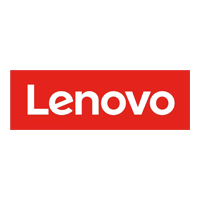

A blade server is a compact, self-contained computing module that fits into a standardized enclosure, known as a blade chassis. Each blade server module houses essential hardware components, such as a central processing unit (CPU), memory, storage, and networking interfaces. These components are optimized for efficiency, making blade servers ideal for data center environments.
This article will explore the fundamental characteristics of blade servers, how they differ from traditional servers, their components, and their architecture. We will also discuss their various benefits, use cases, and potential downsides.
But first, let’s further explore the answer to the question, “what is a blade server?”
A blade server is a specialized computing device designed for use in data centers and enterprise environments. It represents a significant departure from traditional rack-mounted servers in terms of form factor and scalability.
At its core, a blade server is a modular computing unit that shares common resources and infrastructure within a dedicated chassis.
Over the years, blade servers have transformed significantly in response to the evolving demands of data centers and enterprise computing.
The inception of blade servers dates back to the late 1990s when the imperative for more efficient data center infrastructure became evident. During this nascent stage, prototype blade servers emerged as an endeavor to consolidate multiple servers into a smaller form factor.
However, these early versions were characterized by a lack of standardization, with each manufacturer devising proprietary designs.
One of the pivotal moments in the evolution of blade servers was the establishment of industry standards. Organizations like the Server System Infrastructure (SSI) Forum played a crucial role in crafting common specifications for blade servers. This standardization facilitated interoperability and compatibility among products from different manufacturers, fostering broader acceptance and adoption across the industry.
The relentless march of technology led to significant improvements in blade server hardware. Processors, memory, and storage capacities continually advanced, enabling blade servers to tackle increasingly demanding workloads.
Furthermore, innovations in cooling techniques and power efficiency addressed the challenges associated with consolidating multiple servers into a compact chassis.
The ascent of virtualization technologies, exemplified by VMware and Microsoft Hyper-V (now Azure Virtual Machines), had a profound impact on blade servers. Blade systems emerged as an ideal platform for virtualization, capable of consolidating numerous virtual machines (VMs) onto a single hardware chassis. This approach yielded heightened resource utilization and cost savings.
As blade servers matured, their utility expanded beyond traditional data centers. They found application in edge computing environments, high-performance computing (HPC) clusters, and specialized sectors like telecommunications.
Simultaneously, a growing emphasis on sustainability and energy efficiency drove the development of energy-saving features in blade systems, including dynamic power management and advanced cooling solutions.
Blade servers stand out from traditional rack-mounted servers in several key ways:
Blade servers are known for their unique architecture, which sets them apart from traditional rack-mounted servers. Understanding the key components and the overall architecture of blade servers is essential for appreciating their efficiency and versatility.
Here are the fundamental elements that make up a blade server system:
At the core of a blade server system is the blade chassis, also known as the enclosure or chassis enclosure. This chassis serves as the physical housing for multiple blade server modules. Its primary functions are:
Blade modules, often referred to simply as “blades,” are the heart of a blade server system. Each blade server module is an independent computing unit that fits into a slot within the blade chassis.
The key features of blade modules include:
Blade servers typically include management modules, which are essential for remote monitoring and control. These modules provide a unified management interface for all blades within the chassis.
Essential functions of management modules include:
Blade servers offer a range of compelling advantages that make them a preferred choice for many data centers and enterprise environments. Their unique architecture and design contribute to several key benefits that address the evolving needs of modern IT infrastructure.
One of the standout features of blade servers is their high server density. Multiple blade modules can be housed within a single blade chassis, allowing data centers to maximize their computing power while minimizing the physical footprint.
This dense packaging of servers is particularly advantageous in environments where space is at a premium.
Blade servers are designed with energy efficiency in mind. Because they share common resources, such as power supplies and cooling systems, they can significantly reduce power consumption and cooling requirements compared to traditional rack-mounted servers.
This efficiency not only lowers operational costs but also contributes to a greener and more environmentally sustainable data center.
Blade server systems provide centralized management capabilities, making them easier to configure, monitor, and maintain. Administrators can control all blade modules within a chassis from a single management interface, streamlining administrative tasks.
Additionally, blade servers offer seamless scalability, as administrators can add or remove blade modules as needed to adapt to changing workloads or capacity requirements.
Blade servers can lead to significant cost savings over the long term. While the initial investment in blade infrastructure may be higher than traditional servers, the overall TCO is often lower due to reduced power consumption, simplified management, and optimized space utilization.
Organizations can achieve a favorable return on investment (ROI) by leveraging these cost-effective benefits.
Blade server systems typically include integrated networking and storage options that are well-suited to modern data center needs. High-speed connectivity options, such as 10 Gigabit Ethernet (10GbE) or higher, are readily available.
The design also allows for efficient cable management, reducing clutter and simplifying network and storage connections.
Blade servers offer flexibility in configuring blade modules to meet specific workload requirements. Different blades can be tailored to handle various tasks, such as virtualization, database management, or web hosting.
This flexibility allows organizations to optimize their computing resources for diverse application workloads.
Blade modules are hot-swappable, which means they can be replaced or upgraded without disrupting the operation of other blades. This feature enhances system uptime and simplifies hardware maintenance, reducing the risk of downtime during critical operations.
The compact form factor of blade servers helps data centers optimize their physical space. Rack-mounted blade chassis take up less floor space compared to a similar number of traditional servers, leaving more room for additional infrastructure or future expansion.
While blade servers offer a range of benefits, they are not without their downsides and considerations. It’s important to evaluate these potential drawbacks to make an informed decision when implementing blade servers in a data center or enterprise environment.
One of the primary drawbacks of blade servers is their initial cost. Blade chassis and modules tend to have a higher upfront price compared to traditional rack-mounted servers. Organizations must carefully assess their budget constraints and long-term cost savings to justify the initial investment.
Blade servers are often proprietary solutions, which means they may lock organizations into a specific vendor’s ecosystem. Compatibility issues can arise when mixing blades from different manufacturers within the same chassis.
This vendor lock-in can limit flexibility and increase reliance on a single vendor for maintenance and support.
Blade chassis have a fixed number of slots for blade modules. Once these slots are filled, expanding the system may require the purchase of additional chassis, which can lead to increased costs and complexity.
This limitation can be a challenge for organizations with rapidly growing computing needs.
The dense packaging of blade servers can lead to complex cabling requirements, especially when multiple chassis are used. Managing and organizing these cables can become challenging and increase the risk of cable-related issues.
Proper cable management is crucial to avoid performance and maintenance problems.
While blade servers offer redundancy features, such as redundant power supplies and networking options, the chassis itself can be a single point of failure. If a chassis experiences a critical hardware issue, all blade modules within that chassis may be affected.
To mitigate this risk, organizations need to implement failover and redundancy strategies.
Not all blade servers are compatible with all chassis. Mixing and matching blades from different generations or manufacturers can be problematic, potentially leading to performance issues, compatibility conflicts, or reduced efficiency.
Ensuring compatibility requires careful planning and research.
While blade server systems offer centralized management, the complexity of managing multiple blades within a chassis can be daunting for some IT administrators. A thorough understanding of the management interface and its capabilities is necessary to harness the full potential of blade servers.
While blade servers can save space compared to traditional servers, they still require dedicated rack space for the chassis. In small data centers or tight spaces, accommodating blade chassis may not be feasible.
Blade servers come in various configurations and designs to accommodate diverse computing needs. Understanding the different types of servers can help organizations choose the right solution for their specific requirements.
Here are several types of blade servers commonly available:
General-purpose blade servers are versatile and suitable for a wide range of applications. They are designed to handle typical computing workloads, including web hosting, database management, virtualization, and more.
These blades offer a balance of processing power, memory, and storage capacity, making them adaptable to various use cases.
Virtualization-optimized blade servers are tailored for virtualized environments, such as VMware, Microsoft VMs, or Linux Kernel VM. These blades often feature enhanced memory and CPU resources to support multiple VMs efficiently. They may also include hardware-assisted virtualization features for better performance.
HPC blade servers are engineered for compute-intensive workloads that require substantial processing power. These blades often incorporate multiple high-performance CPUs, large memory capacities, and support for GPU accelerators.
They are commonly used in scientific research, engineering simulations, and other demanding computational tasks.
Graphics-intensive blade servers are optimized for graphics processing tasks. They are equipped with powerful GPUs, making them well-suited for applications like 3D rendering, video editing, and scientific simulations that rely on extensive graphical processing capabilities.
Storage blade servers focus on providing ample storage capacity and connectivity options. They are equipped with multiple hard drives or SSDs and may include features like hardware RAID controllers for data redundancy and high availability.
These blades are commonly used in storage-centric applications and for building scalable storage clusters.
Converged and HCI blades integrate computing, storage, and networking resources into a single solution. They are designed for organizations seeking to simplify data center infrastructure by consolidating these components.
Converged blades provide a unified platform for compute and storage, while HCI blades extend this concept to include virtualization and software-defined storage capabilities.
In the telecommunications and edge computing sectors, specialized blade servers are deployed to meet specific industry requirements. These blades are often ruggedized, designed for harsh environmental conditions, and equipped with features tailored to telecom and edge computing applications.
Some organizations require custom blade server solutions designed to meet unique specifications and performance demands. In such cases, vendors may collaborate with customers to create bespoke blade server configurations tailored to their exact needs.
Blade servers have found widespread adoption across various industries and computing scenarios due to their efficiency, scalability, and manageability. Understanding the diverse use cases for blade servers can help organizations make informed decisions about implementing this technology.
Here are some common use cases for blade servers:
Blade servers find extensive use in data centers and enterprise environments, serving as versatile workhorses for a range of computing tasks.
In the realm of high-performance computing, blade servers are the backbone of scientific research and financial analysis.
As edge computing gains momentum, blade servers play a pivotal role in processing data closer to the source. They are also effective options for real-time IoT data processing, industrial applications, and industrial IoT (IIoT) scenarios.
Blade servers form the core of telecom infrastructure, supporting critical functions like voice and data services, as well as network functions virtualization (NFV) for streamlined network management.
Blade servers find application in specialized domains, from graphics and media processing to big data analytics and healthcare. Education and research institutions also rely on blade servers to power campus data centers, facilitating a wide range of academic and research activities.
Selecting the most suitable blade server for your organization is a decision that warrants careful consideration. The choice you make can significantly impact your data center’s performance, scalability, and efficiency.
To help guide your decision-making process, here are key considerations to keep in mind:
Selecting the right server form factor is a critical decision for organizations, as it directly impacts their computing infrastructure’s efficiency, scalability, and management. Blade servers are just one of several server form factors available.
In this section, we will compare blade servers with other common server form factors to help you make informed decisions about the best fit for your IT environment.
Compared with rack servers, blade servers are highly compact and share resources within a chassis, offering high server density and reducing space requirements and cabling complexity. They feature centralized management, simplifying administration, making them ideal for virtualization and cloud computing environments.
On the other hand, rack-mounted servers are standalone units mounted on racks, each operating independently with its own power supply and cooling. While they offer more independence, scalability may involve adding more racks, increasing floor space, making them a common choice for traditional, non-virtualized workloads.
Blade servers are self-contained modules within a chassis, sharing power, cooling, and networking infrastructure, offering high server density and scalability. They excel in space efficiency, and centralized management is a key feature.
In contrast, modular servers are flexible and modular systems designed for various configurations. Components like CPU, memory, storage, and networking are hot-swappable, providing flexibility for custom configurations and gradual scalability.
The choice depends on whether you prioritize density and centralization or flexibility and customizability.
Blade servers are designed for high-density data center environments, rack-mounted, and not suitable for standalone use. They rely on blade chassis to house multiple blade modules for shared resources.
Tower servers, on the other hand, are standalone units designed for small to medium-sized businesses. They are self-contained, occupying more floor space, making them suitable for organizations with minimal server needs or where space is not a constraint.
Consider your organization’s scale and space requirements when choosing between these options.
Blade servers are a hardware-focused solution, offering high server density and centralized management. They can be part of converged infrastructure when combined with storage and networking components. Converged infrastructure bundles compute, storage, and networking into a single integrated solution.
HCI goes a step further by incorporating virtualization and software-defined storage, making it ideal for organizations seeking simplified data center infrastructure management.
The decision hinges on whether you prefer a hardware-centric approach with high density or an all-in-one solution with streamlined management.
The landscape of data centers is constantly being reshaped by continuous advancements in blade server technology, offering a glimpse into the future of efficient and high-performance computing infrastructure.
Here are some of the latest developments and trends shaping the world of blade servers:
Blade servers have long been celebrated for their compact and efficient design, a trend that is gaining momentum in data centers worldwide. These servers are engineered to maximize space utilization while minimizing power and cooling requirements within the data center.
By integrating critical resources like power supplies and cooling systems within a single chassis, blade servers provide a streamlined and space-saving solution.
The advent of virtualization technology has ushered in a transformative era for data centers. It allows organizations to load multiple VMs onto a single physical blade server, significantly enhancing hardware utilization and resource consolidation.
Blade servers have emerged as key players in data center consolidation efforts, enabling cost reductions and serving as platforms for enhanced virtualization, automation, and provisioning capabilities.
The widespread adoption of cloud computing services has brought blade servers to the forefront of this transformative trend. Global corporations providing cloud services increasingly rely on blade servers to underpin their sprawling infrastructure.
Blade servers offer the scalability, efficiency, and manageability required to support the dynamic and resource-intensive demands of cloud computing environments.
In the pursuit of optimizing blade server performance and reducing latency, pass-through technology has emerged as a vital deployment method. This technology establishes direct connectivity between blade servers and the data center network, minimizing network bottlenecks and enhancing overall efficiency.
It represents a crucial step towards unlocking the full potential of blade servers in high-performance computing scenarios.
Looking ahead, the future of blade server technology holds exciting possibilities, driven by virtualization and optimization strategies. One promising avenue is the integration of software-defined networking (SDN) to manage blade servers and their associated networks. SDN promises greater agility and adaptability, paving the way for more efficient resource allocation and network management.
Furthermore, AI and ML are poised to revolutionize blade server performance optimization and energy efficiency. By harnessing the power of AI and ML algorithms, blade servers can dynamically adapt to workload fluctuations, allocate resources more efficiently, and reduce energy consumption, aligning with the growing emphasis on sustainability and environmental responsibility.
When it comes to selecting the right blade server for your organization, navigating the sea of options can be daunting. To help streamline your decision-making process, we’ve curated a list of three top-performing blade servers that have garnered recognition in the industry. Each of these servers offers unique features and capabilities, making them standout choices in the world of blade server technology.

Hewlett Packard Enterprise (HPE) BladeSystem, introduced in June 2006, stands as a distinguished line of blade server solutions within the HPE ecosystem. Operating as a modular infrastructure platform, the BladeSystem seamlessly integrates servers, storage, and network fabric, expediting operations and enhancing the delivery of applications and services across physical, virtual, and cloud environments.
This dynamic platform is an integral component of the HPE Converged Systems framework, sharing a unified converged infrastructure architecture that encompasses server, storage, and networking products. HPE BladeSystem is engineered to cater to enterprise installations ranging from 100 to well over 1,000 VMs, offering the ability to construct high-density systems with up to 128 servers per rack.
Among the standout features of HPE BladeSystem is HPE OneView, a comprehensive dashboard that provides an intuitive summary of server statuses, storage pools, and enclosures. This tool empowers administrators with automated lifecycle management capabilities, streamlining the management of BladeSystems.

Cisco Unified Computing System (Cisco UCS) represents a comprehensive integrated computing infrastructure solution, distinguished by its embedded management capabilities that streamline and expedite the deployment of diverse applications. From facilitating virtualization and cloud computing to supporting scale-out and bare-metal workloads, in-memory analytics, and edge computing for remote locations and vast IoT data, Cisco UCS boasts versatility.
It transcends the boundaries of traditional server collections, evolving into a fully self-aware and programmable system that extends beyond hardware boundaries. Cisco UCS encompasses a hierarchical arrangement of components, including blade servers, rack servers, modular servers, multinode servers, and storage servers, with each connectivity domain anchored by a pair of Cisco UCS fabric interconnects.
The focal point of this unified system is Cisco UCS Manager, a centralized management solution that seamlessly integrates blade, rack, and storage servers, ensuring a cohesive and self-integrating infrastructure.

Lenovo Flex System Blade Servers represent a robust line of high-performance blade servers engineered to excel in handling business-critical workloads. Positioned as the next generation of blade technology, the Flex System boasts augmented performance, bandwidth, and consolidation and virtualization capabilities compared to its predecessors.
At the core of the Flex System ecosystem lies the Flex System Enterprise Chassis, serving as the cornerstone for high-speed performance and seamless integration of servers and networking components. This flexible design allows organizations to address the diverse demands of their workloads effectively, benefiting from independently scalable IT resource pools that enhance utilization efficiency and reduce the cost per workload.
The Flex System Enterprise Chassis embodies reliability, adaptability, and efficiency, offering a diverse array of compute and networking options. Performance is a hallmark feature, with Flex System Blade Servers incorporating up to two Intel Xeon E5-2600 v4 processors, each equipped with up to 22 cores, complemented by Lenovo TruDDR4 technology for lightning-fast memory capabilities.
Blade servers have emerged as a versatile and efficient solution, offering high server density, reduced power consumption, and centralized management. However, the key to making an informed choice lies in a thorough understanding of your organization’s unique demands and the nuances of blade server technology.
Furthermore, the ongoing shift towards edge computing, security enhancements, and sustainability initiatives underscores the need for continuous assessment and adaptation. By carefully evaluating your organization’s current and future requirements in light of these developments, you can make a well-informed decision and harness the full potential of blade server technology to drive efficiency, scalability, and performance in your data center or computing environment.
Interested in taking the next step? Here are the best blade servers on the market, hand-picked by our experts.


Allan is based in Quezon City, Philippines, with over a decade of experience in the ever-evolving IT landscape. With a degree in Computer Science and another in Information Science plus eight years freelancing for B2B and tech enterprises, Allan is proud to marry first-hand skills with research-based storytelling to make the most complex topics understandable and accessible. When not navigating the realms of servers, SaaS, networking, web development, and other digital technologies, he finds solace in the imaginative worlds crafted by authors like Robert Jordan and J.R.R. Tolkien.
Property of TechnologyAdvice. © 2025 TechnologyAdvice. All Rights Reserved
Advertiser Disclosure: Some of the products that appear on this site are from companies from which TechnologyAdvice receives compensation. This compensation may impact how and where products appear on this site including, for example, the order in which they appear. TechnologyAdvice does not include all companies or all types of products available in the marketplace.